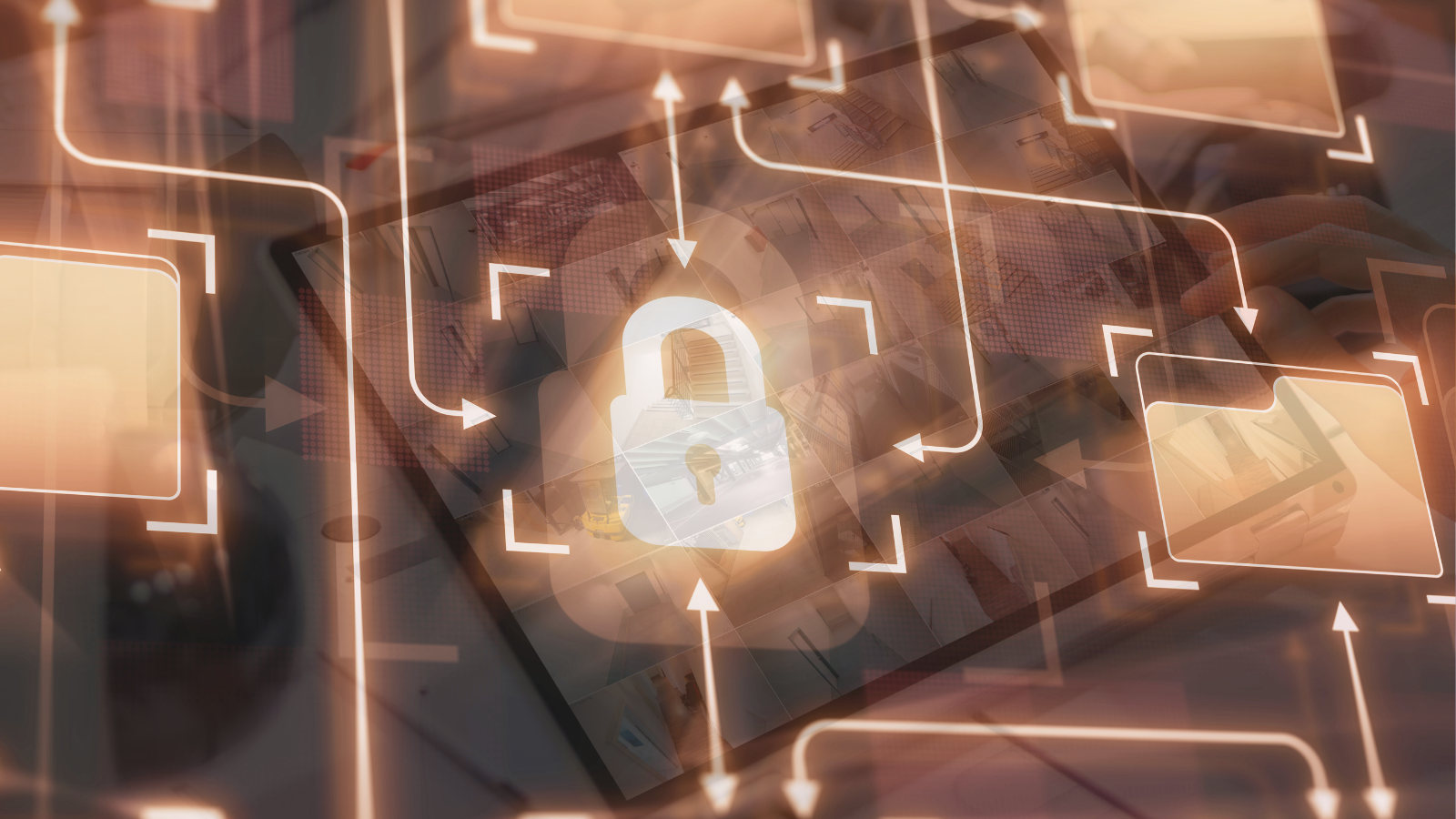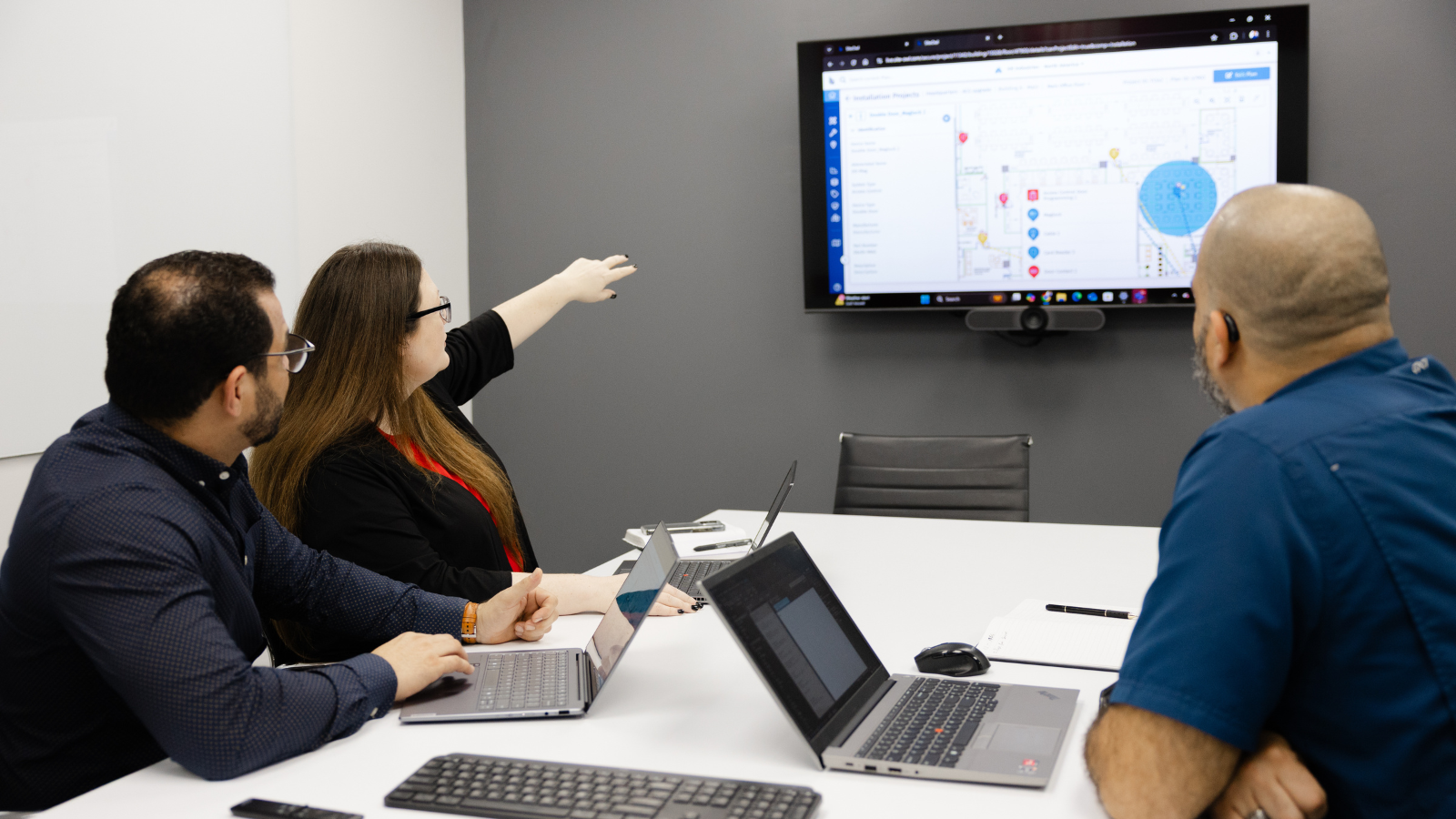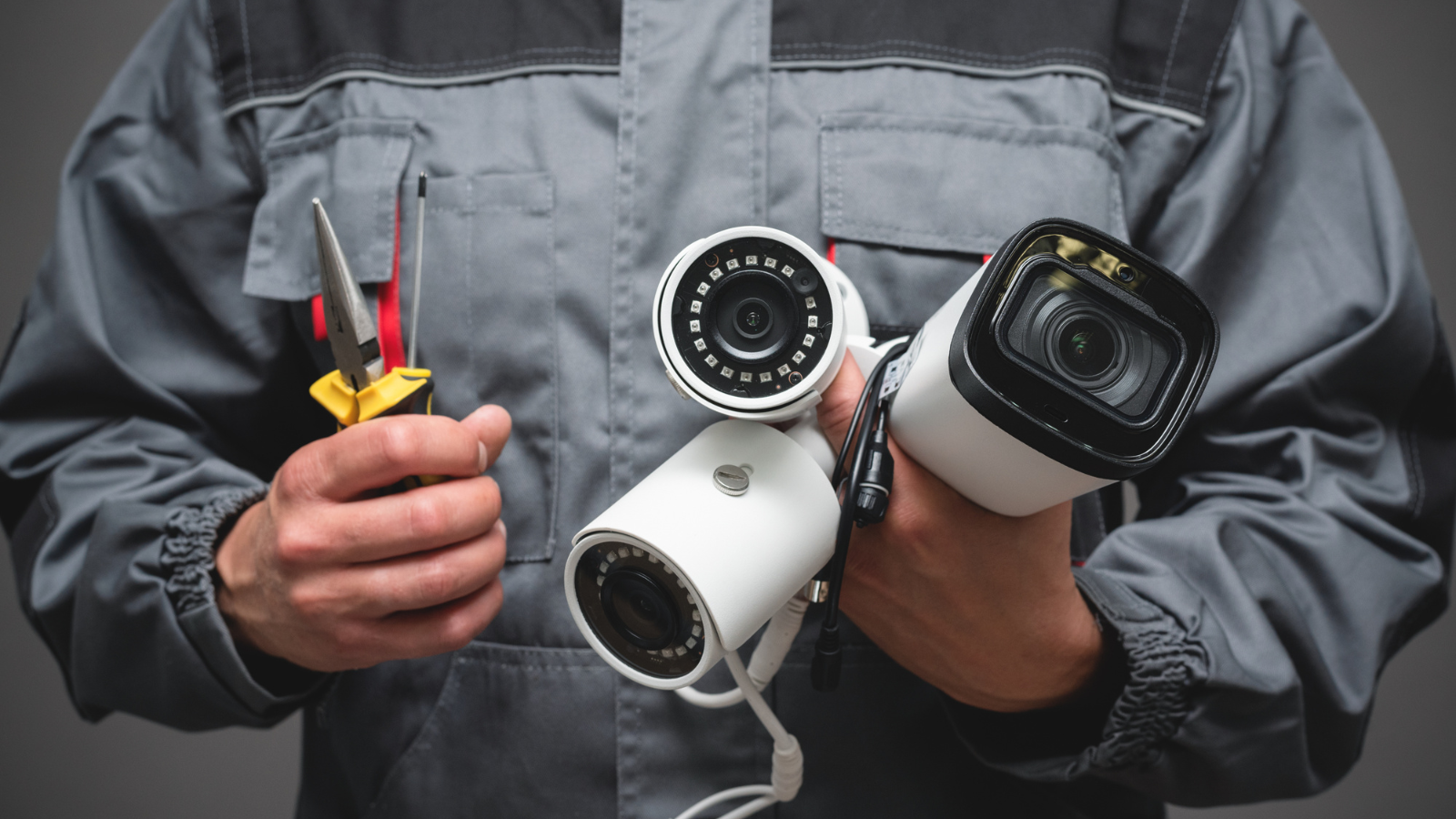Five physical security lifecycle planning challenges and actionable tips to overcome them!
Table of Contents
- Base your designs on accurate information
- Standardize designs for consistency
- Adopt Modular Security Systems
- Take advantage of technology and digitization
- Centralize information and make collaboration easy
Designing effective physical security solutions is a major challenge for many organizations. While the growing complexity of security threats and fast-paced technological changes make the process more complicated, it really comes down to needing the right tools to design effective physical security solutions.
With many security professionals still relying on spreadsheets and other manual methods to design and manage their physical security systems, it’s easy to understand why the process can be so difficult.
In this article, we highlight five challenges security leaders face when designing physical security systems and provide actionable tips for overcoming them with SiteOwl’s Lifecycle Management platform.
What is physical security concerned with?
Physical security is concerned with implementing security measures to safeguard people, assets, and property from unauthorized access and harm. It is a crucial aspect of enterprise security, and an effective physical security program must be comprehensive and well-managed.
Effective physical security design is a journey, not a destination, and requires an ongoing commitment beyond the initial design phase. Physical security design is an essential aspect of any organization’s security program. It involves the creation of an environment that is secure, functional, and conducive to the organization’s operations.
Examples of effective physical security designs include:
- A company that uses a combination of access control, video surveillance, intrusion detection systems, and other security technology to deter and detect unauthorized entry into its facilities.
- A retail chain that installs an integrated security system to strengthen its security posture, enforce security standards, and reduce risk.
- A local utility company that implements physical security lifecycle measures to ensure operating systems are secure and critical infrastructure is protected in line with mandated security requirements.
Physical security is your first line of defense
In today’s modern workplace, security leaders must quickly and efficiently adapt to changing threats, vulnerabilities, environmental conditions, and stakeholder expectations. This is virtually impossible to do with manual processes and legacy tools because they cannot provide the visibility and insights needed to adapt to changing environments.
While we could write a book (check out SiteOwl ebooks!) about the challenges of designing effective physical security solutions, essentially, the top challenges security leaders face when designing physical security systems come down to five NOTs:
- Not basing designs on an accurate floor plan.
- Not standardizing security system designs.
- Not adopting modular security systems.
- Not taking advantage of technology.
- Not collaborating with experts, stakeholders, and partners.
The good news is that you can easily turn these five NOTs into five DOs by leveraging SiteOwl’s Lifecycle Management platform and following these five tips.
Download ebook – Managing the Lifecycle of Physical Security Systems
1. Base your designs on accurate information
Accurate information is the foundation of any good design. No security plan in the world can succeed if the information it relies on is incorrect. Unfortunately, it’s not uncommon for security directors to base their designs on inaccurate inventory, device specifications, and floorplans. This can lead to systems design problems, such as mis-deployments, misplacements, and costly over- or under-buying.
For example, you may have provided your integrator with the specifications for a particular door, but the door was installed at a different location or was a different model than you specified. After looking through your spreadsheets and floor plans, you find that there are gaps in your security design. Not only does this cause you to spend more money on security systems, but it also increases the risk of failure.
Accurate inventory is critical to a good security design and is the first step in developing a comprehensive plan. Without it, security teams will are left guessing or over-relying on external integrators.
Obtain an accurate inventory of all assets in your facility
It’s best to complete a detailed security inventory audit before design work begins. Security inventories can be part of your regular security practices or conducted as a separate risk assessment. Either way, the goal is to clearly understand what security resources are currently in place, where they’re located, and when they were last checked.
Information such as warranty, maintenance, and repair records are also critical. Imagine tracking all of this information in a spreadsheet! No wonder security teams spend so much time trying to keep track of their inventory.
Obtain in-depth information for smoother upgrades
With in-depth information, you can see exactly where you need to add a device or space to ensure adequate coverage. For example, if your updated security plan requires new access points, you can quickly see where coverage is lacking and where additional keypads should be installed. The same goes for biometrics, surveillance systems, and intrusion detection systems.
Still, the challenge for many security teams is that information is often incomplete or inaccurate. Information gaps can result in a number of issues, including:
- Inaccurate system information.
- Inability to accurately forecast and plan budgets, staffing, and other resources.
- Inadequate information for internal reporting, upkeep, and system maintenance.
So what’s the solution? A centralized system that provides accurate, up-to-date information on all assets and devices. With SiteOwl, for example, you can manage your entire security inventory in one place and gain complete visibility so that you can see exactly what devices are installed and their precise location.
Accurate Floor Plans are Critical
How often have you been asked to review a floor plan only to find it outdated? Probably more than you care to admit, but when it comes to physical security system designs, too often, security teams are left with obsolete floor plans or are forced to rely on manual sketches that set them up for failure when it comes time to install the system because manual processes and pictures don’t include critical information such as:
- Cable lengths and cable colors
- Camera angles and field of views
- Wall and ceiling mount locations
- Accurate room layouts and dimensions
- Coverage gaps and risk areas
Simplify Security Design with a Centralized System
Designing a comprehensive and effective system is nearly impossible without an accurate floor plan. Moreover, a traditional floor plan is not enough in today’s fast-paced and ever-changing world. To stay ahead of the game, you need a dynamic floor plan that provides a visual interface for fast and easy real-time security management and monitoring.
With a centralized system, security teams can easily identify and fill any information gaps and ensure that designs are based on accurate floor plans, all from a laptop or mobile device. They can easily adapt to changes, update restricted areas, and add new assets. Additionally, with SiteOwl’s platform, teams can seamlessly manage their entire security inventory in one place, allowing for complete visibility and streamlined design processes.
2. Standardize designs for consistency
Standardization of physical security system design is a process of developing guidelines, procedures, and requirements that define how to consistently design, configure, and deploy physical security systems. For your security policy to be effective, you need to develop and maintain a standardized design for your physical security system consistent across all your locations. While it may initially be challenging to standardize your security system design process, the benefits are clear.
A lack of standardized security system management practices can increase security risks, lead to design process inconsistencies, and create many on-site challenges. For example, suppose you’re renovating several properties nationwide without a centralized system to collaborate on the designs. How would you:
- Stay on top of ongoing security system design changes and updates?
- Monitor ongoing system design to ensure compliance with the standards?
- Identify and manage the risks associated with the design?
- Respond to evolving physical threats and vulnerabilities?
- Update management systems and processes?
- Keep all stakeholders informed?
Without a standard system design process, odds are you will not be able to answer these questions, which will lead to problems with the final solution. Security controls are only as effective as the management processes in place to maintain them, so it is critical to standardize your design process.
Standardization + Cloud-Based Solution=Better Design Process
Standardization creates cost savings by streamlining processes, improves system reliability, and makes it easier to manage system upgrades. With SiteOwl’s comprehensive lifecycle management platform, you can streamline your security design process and achieve greater consistency and efficiency.
3. Adopt modular security systems
Physical security projects are already complex, so you should always at least consider a process, product, or solution that can make the process easier. Modular physical security systems are like pre-packaged security kits designed to be easily installed and customized to meet a facility’s specific needs.
Here are some of the benefits of using modular security systems:
- Flexibility: Modular security systems can be easily customized to meet the specific needs of a facility. For example, a modular surveillance system can be expanded to accommodate new security cameras or new access points.
- Scalability: Modular security systems can be easily scaled to meet the changing needs of a facility. For example, access control systems can be expanded to accommodate new personnel or access points.
- Cost-effectiveness: Modular security systems are typically more cost-effective than traditional security systems.
- Ease of installation and maintenance: Modular security systems are designed to be easy to install and maintain. For example, alarm systems that are integrated with a video surveillance system can be easily integrated into an existing security system.
More and more security professionals are adopting modular security systems for ease of installation and use. For example, a large warehouse facility can implement wireless intrusion sensors and wireless video assessment equipment to enhance existing physical security systems. In this case, a modular system architecture in combination with SiteOwl’s platform empowers security teams with real-time event reporting and much more.
Boost Design Efficiency with SiteOwl
When it comes to designing physical security solutions, efficiency and accuracy are critical to the project’s success. SiteOwl helps security teams of all sizes design solutions by digitizing the process and providing users with a comprehensive toolkit that can be used to plan and design any solution. For example, one company saw a 30% improvement in efficiency when designing security systems and a 50% time savings while submitting job reports and tracking installation progress while in the field.
4. Take advantage of technology and digitization
Designing physical security solutions without the right tools is more than a challenge for security teams; it can be a never-ending horror show. Much of the horror comes from many teams relying on paper-based processes and inefficient tools such as spreadsheets and non-industry project management applications. Think of the time, effort, and resources security teams waste escorting contractors on-site, locating surveillance cameras, and physically walking through properties to verify a design.
But how can security teams overcome these challenges and take advantage of the best technology to design and build better physical security solutions? One word: digitization. Traditionally, the security industry has been slow to adopt technology, but the reality is that digitization is now a necessity. In fact, in 70 percent of surveyed organizations, the top priority is using tech to simplify workflows and manual processes.
The good news is that security teams can leverage technology to digitally transform how they design and build solutions. For example, cloud-based technologies such as SiteOwl help security teams design systems accurately and efficiently with greater speed and accuracy, minimizing the time and effort required to design and build physical security systems.
Leverage technology with SiteOwl
Cloud-based technologies such as SiteOwl have revolutionized the way security teams design physical security solutions. With SiteOwl’s comprehensive platform, security professionals can design customized security systems to meet specific facility needs while streamlining the design process. In addition, SiteOwl puts you in control of your design and layout process by making it easier for you to access the information you need to design and build efficient solutions.
5. Centralize information and make collaboration easy
All the technology in the world won’t help if security teams are not able to access the information they need to build secure solutions. Security guards, IT teams, and other security personnel must be able to access the data they need in order to effectively carry out their responsibilities. An integrated security platform can help security professionals centralize information and make collaboration easier to ensure everyone involved in the design process is on the same page.
While most people agree that technology plays a key role in improving security outcomes, many continue to operate in silos that make it difficult for them to achieve their security goals. Data silos reduce the efficiency of security teams and make it difficult for them to collaborate. Centralizing data eliminates these barriers by integrating all information into a central, shareable database that can be accessed by all the stakeholders involved in the design process.
The result is that the security team can make informed decisions faster and build more efficient, effective, and secure solutions.
Data-driven decision-making is the way forward!
Data-driven decision making is a must for security professionals that want to optimize their security design process. With SiteOwl, teams can make informed decisions based on real-time data and generate accurate insights. In addition, by analyzing data, security teams can better understand their environments and build more effective security solutions that meet a facility’s specific needs.
SiteOwl enables security teams to make data-driven decisions by providing them with real-time visibility into their environments and allowing them to share their data with key stakeholders. Moreover, the platform allows end-users to:
- View progress on projects being executed by integrators or internal teams..
- Access real-time reporting to facilitate coordination, commissioning and programming.
- Maintain detailed device-level data, including warranty expiration, pictures, and much more!
The stakes are high, and security professionals must make decisions quickly. With an ever-challenging threat landscape, you don’t have time to manually analyze data and build reports that are often inaccurate. Instead, you need a solution that will allow you to quickly and efficiently analyze your data and make informed decisions.
Learn how SiteOwl can help you transform your security design process by requesting a demo today!

Joseph Ndesandjo
Joseph is SiteOwl's CEO. A security industry veteran, Joseph previously owned 3Sixty Integrated, a top 30 SDM integrator before founding SiteOwl. When not finding ways to make security lifecycle management easier for the industry, Joseph enjoys tennis, running and teaching his son to play chess.







